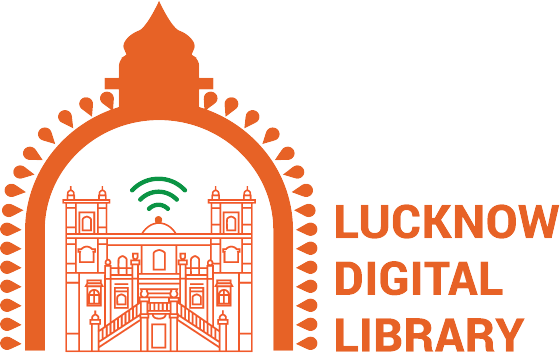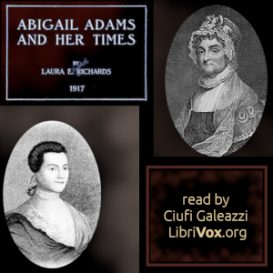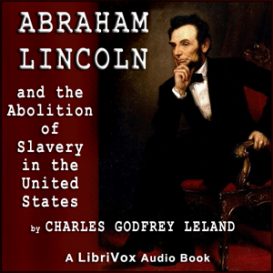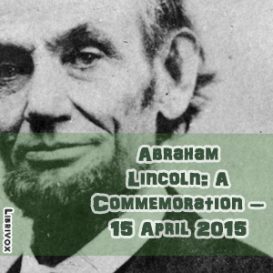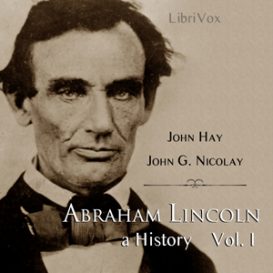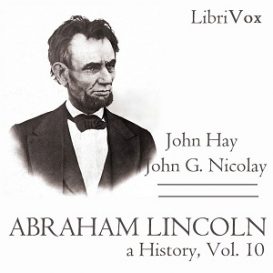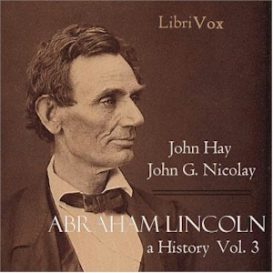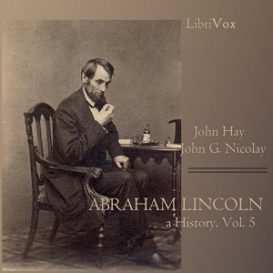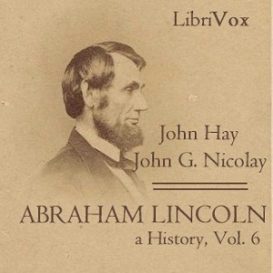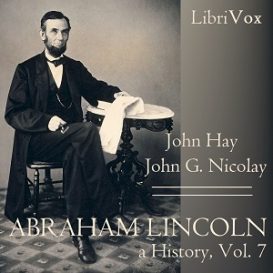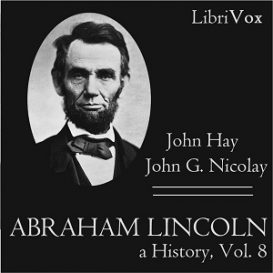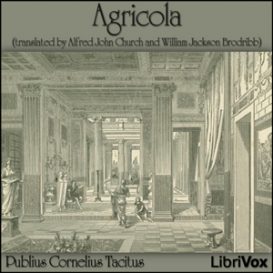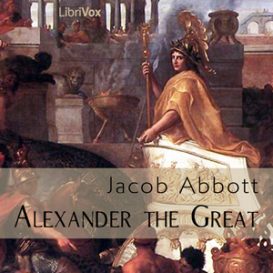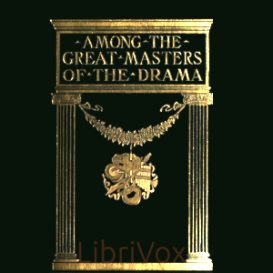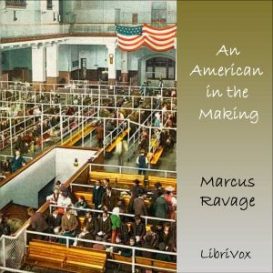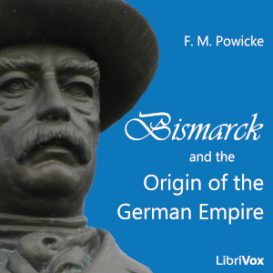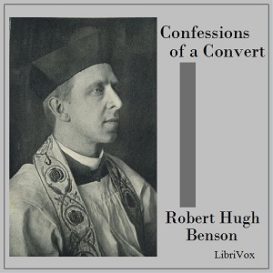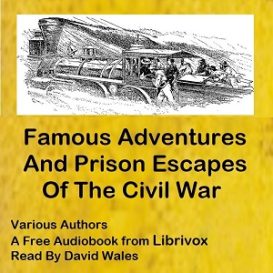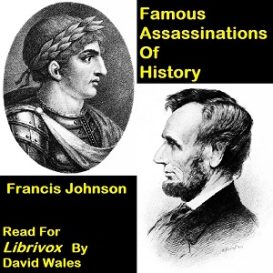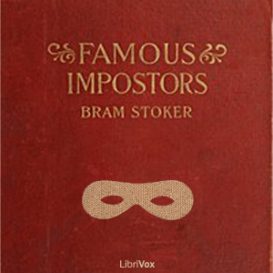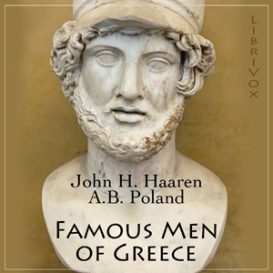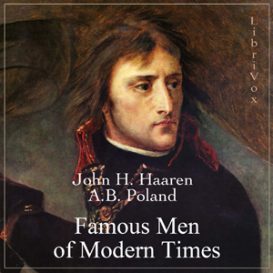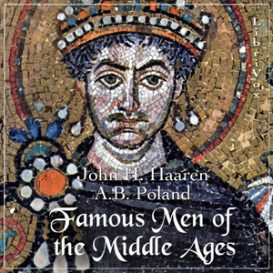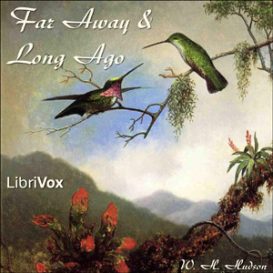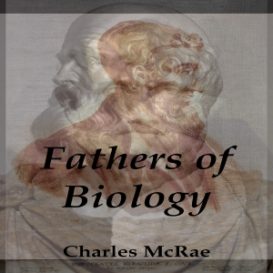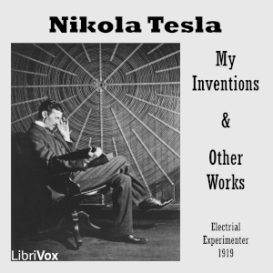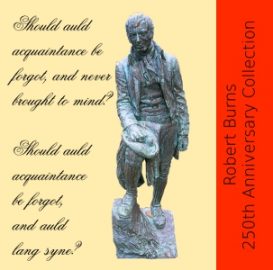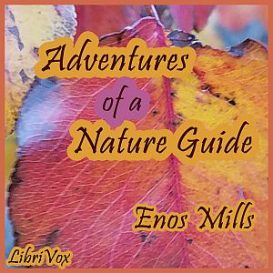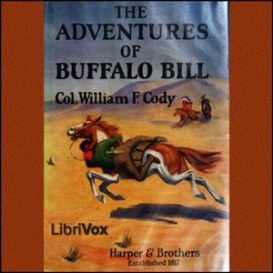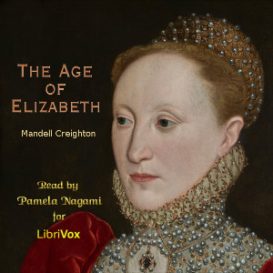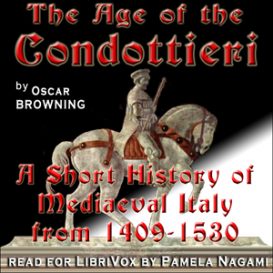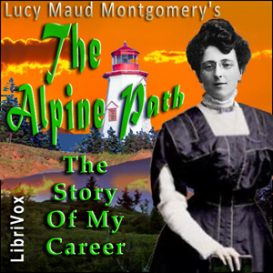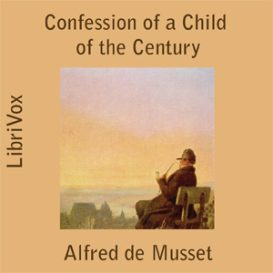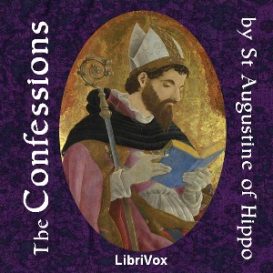Biography & Autobiography
Showing all 48 results
”Tell It All”: The Story of a Life’s Experience in Mormonism
Fanny relates the experiences of a 19th century missionary as she and her young husband proselytize throughout Europe in search of converts to the new Mormon faith. Her religious zeal is sorely tested upon receipt of news from America revealing that their religion has adopted the practice of polygamy as the means to exaltation. The couple is summoned to Utah only to find themselves firmly ensconced in Brigham Young’s inner circle and called upon to practice plural marriage or risk a fall from family, friends, and faith. – Summary by Spiffycat
A Book About Myself
A book written by Theodore Dreiser detailing a history of his life and how he became a writer. – Summary by Michele Eaton
A Book of Sibyls: Mrs. Barbauld, Miss Edgeworth, Mrs. Opie, Miss Austen
This book is a biography of four woman authors whose names were well known by readers at the time of its publication (1883) : Anna Barbaud, Maria Edgeworth, Amelia Opie, and Jane Austen. Though most of us today are only familiar with the writings of Austen, all four of these women are well worth taking the time to get to know. The author, Anne Thackeray Ritchie, was the eldest daughter of William Makepeace Thackeray. – Summary by Ciufi Galeazzi
A Day With Great Poets
Who was John Milton? The author of Paradise Lost you say? Well, certainly, but he was also a man, going about his daily life like any of us in 17th century England, (except that he was a genius of course). Take time to read about a day in his life and learn more about him and his likes, dislikes, background and proclivities. Also, the same with Samuel Taylor Coleridge, Walt Whitman, Lord Byron, Keats and Elizabeth Barrett Browning. Each of them a man or woman of their times, living each day like us, but seeing shades and hues of life that we can only experience through their exquisite poetry. These are meant by the author to be brief biographies with examples of their works and some insights into their common foibles as humans in addition to human geniuses. If you love to read poetry, you will enjoy reading these short bios which contain much of their best poetry in them. The selections are from a number of stand alone sources but Browning is part of another book and the link below is to that directly. (Summary by phil chenevert)
Abigail Adams and Her Times
This is a young person’s biography of Abigail Adams that will appeal to readers of all ages. In the author’s own words, “I am not writing a history; far from it. I am merely throwing on the screen, in the fashion of today, a few scenes to make a background for my little pen-picture-play. ” – Summary by Ciufi Galeazzi
Abraham Lincoln and the Abolition of Slavery in the United States
The book is a biography of Abraham Lincoln with emphasis on how his personality and beliefs impacted the history of the American Emancipation and its causes. The book is very well written, easy to read and includes incredible historical information being written by a man who was there during the civil war. He even fought in the war and was able to add his insight into the happenings from his own perspective. This book would add knowledge to anyone who really wants to know the truth about Abraham Lincoln and the Civil War. – Summary by philip chenevert
Abraham Lincoln: A Commemoration ? 15 April 2015
April 14-15th, 2015, is the 150th year anniversary of President Abraham Lincoln?s assassination. This is a collection of pieces to mark that occasion. Whitman?s poems, written shortly after the death, express his intense grief. Here are prose pieces that Whitman composed in the years following. Included too are three other eulogies regarded by Lincoln scholars as among the best, as well as a narrative from one of the doctors who attended the dying president and two speeches in the British Parliament. And finally three of the President?s finest compositions. ( summary by david wales)
Abraham Lincoln: A History (Volume 1)
This is the biography of Abraham Lincoln, written by two of his private secretaries. (Summary by ashleighjane)
Abraham Lincoln: A History (Volume 10)
Abraham Lincoln: A History is an 1890 ten-volume account of the life and times of Abraham Lincoln, written by John Nicolay and John Hay, who were his personal secretaries during the American Civil War. Volume 10 chronicles Lincoln’s life in early 1865, including his assassination and the events following. (Summary adapted from wikipedia by Ann Boulais)
Abraham Lincoln: A History (Volume 3)
Abraham Lincoln: A History is an 1890 ten-volume account of the life and times of Abraham Lincoln, written by John Nicolay and John Hay, who were his personal secretaries during the American Civil War. Volume 3 chronicles Lincoln’s life from his election in 1860 through April, 1861. ( Summary adapted from wikipedia by Ann Boulais)
Abraham Lincoln: A History (Volume 4)
Abraham Lincoln: A History is an 1890 ten-volume account of the life and times of Abraham Lincoln, written by John Nicolay and John Hay, who were his personal secretaries during the American Civil War. Volume 4 chronicles Lincoln’s life from April to November 1861. ( Summary adapted from wikipedia by Ann Boulais)
Abraham Lincoln: A History (Volume 5)
Abraham Lincoln: A History is an 1890 ten-volume account of the life and times of Abraham Lincoln, written by John Nicolay and John Hay, who were his personal secretaries during the American Civil War. Volume 5 chronicles Lincoln’s life from November 1861 through August 1862. (Summary adapted from wikipedia by Ann Boulais)
Abraham Lincoln: A History (Volume 6)
Abraham Lincoln: A History is an 1890 ten-volume account of the life and times of Abraham Lincoln, written by John Nicolay and John Hay, who were his personal secretaries during the American Civil War. Volume 6 chronicles Lincoln’s life in early 1862. (Summary adapted from wikipedia by Ann Boulais)
Abraham Lincoln: A History (Volume 7)
Abraham Lincoln: A History is an 1890 ten-volume account of the life and times of Abraham Lincoln, written by John Nicolay and John Hay, who were his personal secretaries during the American Civil War. Volume 7 chronicles Lincoln’s life from 1862, including the major battles in the American Civil War that year. (Summary adapted from wikipedia by Ann Boulais)
Abraham Lincoln: A History (Volume 8)
Abraham Lincoln: A History is an 1890 ten-volume account of the life and times of Abraham Lincoln, written by John Nicolay and John Hay, who were his personal secretaries during the American Civil War. Volume 8 chronicles Lincoln’s life from 1862 to 1863. (Summary adapted from wikipedia by Ann Boulais)
Abraham Lincoln: A History (Volume 9)
Abraham Lincoln: A History is an 1890 ten-volume account of the life and times of Abraham Lincoln, written by John Nicolay and John Hay, who were his personal secretaries during the American Civil War. Volume 6 chronicles Lincoln’s life in 1864, including the battles of that summer and Lincoln’s reelection. (Summary adapted from wikipedia by Ann Boulais)
Agricola
The Agricola (Latin: De vita et moribus Iulii Agricolae, lit. On the life and character of Julius Agricola) is a book by the Roman historian Tacitus, written c 98, which recounts the life of his father-in-law Gnaeus Julius Agricola, an eminent Roman general. It also covers, briefly, the geography and ethnography of ancient Britain. As in the Germania, Tacitus favorably contrasts the liberty of the native Britons to the corruption and tyranny of the Empire; the book also contains eloquent and vicious polemics against the rapacity and greed of Rome. This translation by Alfred John Church and William Jackson Brodribb, was first published in 1877. (Summary from Wikipedia.
Alexander Hamilton
Alexander Hamilton was a significant figure in the political and economic development of the early United States. He served in the American Revolutionary War and became an aide to General George Washington. He was one of the authors (along with John Jay and James Madison) of a series of essays know as The Federalist Papers, which were written in support of the ratification of the proposed Constitution. Scholars and others still refer to these essays to this day for interpretation of the Constitution. As the first Secretary of the Treasury in George Washington?s Cabinet, Hamilton was a proponent of a strong centralized government. Hamilton pursued many actions (some controversial) in an attempt to provide financial stability for the new government, including the establishment of the U.S. Mint and a National Bank. Ironically, he may most often be remembered for the infamous pistol duel with Aaron Burr that resulted in Hamilton?s death. (Summary by lubee930)
Alexander the Great
Alexander the Great was one of the most successful military commanders in history, and was undefeated in battle. By the time of his death, he had conquered most of the world known to the ancient Greeks. Alexander the Great is one of many biographies aimed at young people written by Jacob Abbott and his brother. The biographies are written in such a way that makes them appealing and easily accessible to everyone. – Written by Wikipedia and Lizzie Driver
American Men of Action
In this book, Burton Egbert Stevenson writes a brief biography of some of the most noteworthy men in American history. He begins at the very beginning of the history of America with Christopher Columbus and proceeds forward with the story of people who made America what it is today by their respective vocations. It is interesting to note that the vast majority of the subjects started in poverty and excelled financially and in stature. He makes something that could be very dull, a very readable and enjoyable book. (Summary by William Tomcho)
American Men of Mind
?American Men of Mind? is a collection of short biographies of men of note in various disciplines. It is an absorbing collection of short biographies of men who made a difference in American history; most beginning life in very humble circumstances, both in the United States and in foreign countries. Although ?men? is mentioned in the title, Mr. Stevenson also relates biographies of several women. This is a most interesting read. (William Tomcho)
Among the Great Masters of the Drama
In “Among the great masters of the drama; scenes in the lives of famous actors; thirty-two reproductions of famous pictures with text”, Walter Rowlands introduces us to the most famous playwrights and actors that might be seen on the London stages in the 19th century. Many of the playwrights mentioned are very famous until today, like Shakespeare and Moli?re, some are today less well-known. Especially interesting are the short biographies of the stars of the stage, which may in some cases remind you of contemporary actors. – Summary by Carolin
An Alabama Student And Other Biographical Essays
Here are thirteen biographical sketches of physicians penned by one of the founders of modern medicine, William Osler, published in 1908. “Sir William Osler, one of the best-loved and most influential teachers of his time, was born in Canada in 1849?. Wherever he worked his gifted and unique personality was a center of inspiration? one would like to see his honorable place as a man of letters more generally understood. His generous wisdom and infectious enthusiasm are delightfully expressed in his collected writings?. His lucid and exquisite prose, with its extraordinary wealth of quotation from the literature of all ages, and his unfailing humor and tenderness, put him in the first rank of didactic essayists?. Rich in every gentle quality that makes life endeared, his books are the most sagacious and helpful of modern writings?” – Summary by Christopher Morley, Modern Essays, 1921, and David Wales
An American in the Making, the Life Story of an Immigrant
?The sweat-shop was for me the cradle of liberty. . . It was my first university.? Attending lectures and the New York theatre at night; by day sewing sleeves into shirts in a ghetto shop, Marcus Eli Ravage (1884-1965) began his transformation from ?alien? to American. His 1917 autobiography is a paean to the transformative power of education. Ravage emigrated from Rumania in 1900, at the age of 16. After working for several years as a ?sleever? to save money, he enrolls in the University of Missouri (the least expensive school he can find), where culture shock overwhelms him at first. ?I was not sure whether it was a pig or a sheep that bleated, whether clover was a plant and plover a bird, or the other way around.? But he adapts, and eventually embraces ?the bigger and freer world? outside the immigrant ghetto. He writes that, because of his university experience, he was no longer ?a man without a country.? He had become an American. – Summary by Sue Anderson
Bismarck
Otto von Bismarck (1815-1898) famously said, “The great questions of the day will not be settled by speeches or the decisions of the majority…but by iron and blood.” Prince Bismarck unified the German states under Prussian hegemony through a series of carefully orchestrated wars, which excluded Austria from the new Confederation and added Schleswig-Holstein, and Alsace-Lorraine to Germany. But Bismarck avoided useless confrontations and was, above all, a master of balance of power diplomacy. His skills, both at home and abroad, won him the loyal support of Kaiser Wilhelm I. Paternalistic and socially conservative, Bismarck established for workers the very first government sickness, accident, and old-age insurance. This pithy, if pungent little biography was written in 1918 by the French historian, Georges Lacour-Gayet, who often lets Bismarck tell his story in his own inimitable words. – Summary by Pamela Nagami
Bismarck and the Origin of the German Empire
Despite its brevity, this Little Blue Book #142 by the Oxford historian, Sir F.M. Powicke, provides a valuable overview of the political history of Germany from medieval to modern times, culminating in the career of Otto von Bismarck (1815-1898), the Prussian Junker who masterminded the unification of Germany and served as its first Chancellor. – Summary by Pamela Nagami, M.D.
Confessions of a Convert
Robert Hugh Benson was the youngest son of Edward White Benson, the Archbishop of Canterbury and his wife Mary. Benson was was a prolific and popular writer during his time, and in 1903 he became a prominent convert to the Roman Catholic Church from Anglicanism . In 1904 he was ordained a Catholic priest. This book is his personal story of his journey to the Catholic faith, containing comparisons between Catholicism and the Anglican religion. (Summary by Maria Therese)
Explorers and Travellers
?Explorers and Travellers? is a collection of short biographies of some of America?s intrepid explorers. Adolphus W. Greely writes brief but very complete histories of men who risked life and fortune to discover more of our world. A thoroughly enjoyable work if you enjoy exploration and adventure. – summary by William Tomcho
Famous Adventures And Prison Escapes Of The Civil War
Seven narratives published in the late nineteenth century and assembled in this 1913 collection. – Summary by david wales
Famous American Statesmen
A sketch of the lives of some of America’s early Statesmen: George Washington, Benjamin Franklin, Thomas Jefferson, Alexander Hamilton, Andrew Jackson, Daniel Webster, Henry Clay, Charles Sumner, Ulysses S. Grant, and James A. Garfield. (Summary by Barry Eads)
Famous Assassinations Of History
It has been the object of the writer to make each of these ?famous assassinations? the central scene of a picture in which the political, religious, or national features of the epoch in which the assassination occurred are portrayed with historical fidelity and strict impartiality?. Only those assassinations have been included which either had an important and political bearing on the world, or on the nation immediately affected, or which left a profound, and, it would seem, indelible impression on the imagination of contemporaries and posterity. – Summary by Book Preface
Famous Impostors
Aliases. Fraudsters. Confidence tricksters. People pretending to be what they are not, for financial, political or personal gain. Fiction is filled with them to entertain us; but would not be anywhere near as believable if such people had not, in reality, existed since time immemorial. In this work, the famous Bram Stoker throws light on just a few such people, who have tricked their way into the annals of history. – Summary by Lynne Thompson
Famous Men of Greece
Famous Men of Greece is a series of biographical sketches written for the purpose of making the study of history lively and interesting by giving insight into the men who lived during this time. (Summary by Laura Caldwell)
Famous Men of Modern Times
Famous Men of Modern Times is a series of biographical sketches written for the purpose of making the study of history lively and interesting by giving insight into the men who lived during this time. Summary by Laura Caldwell
Famous Men of the Middle Ages
?THE study of history, like the study of a landscape, should begin with the most conspicuous features. Not until these have been fixed in memory will the lesser features fall into their appropriate places and assume their right proportions. The famous men of ancient and modern times are the mountain peaks of history. It is logical then that the study of history should begin with the biographies of these men. Not only is it logical; it is also pedagogical. Experience has proven that in order to attract and hold the child?s attention each conspicuous feature of history presented to him should have an individual for its center. The child identifies himself with the personage presented. It is not Romulus or Hercules or Alexander that the child has in mind when be reads, but himself, acting under similar conditions.? (Excerpt from the Preface)
Far Away and Long Ago
William Henry Hudson was an author, naturalist and ornithologist. Hudson was born of U.S. parents living in the Quilmes Partido in Buenos Aires Province, Argentina, where he spent his youth studying the local flora and fauna and observing both natural and human dramas on what was then a lawless frontier. ‘Far Away and Long Ago’ is a classic memoir of a boy, fascinated by nature, on the Pampas in the 19th century.
Fathers of Biology
An account given of the lives of five great naturalists (Hippocrates, Aristotle, Galen, Vesalius and Harvey) will not be found devoid of interest. The work of each one of them marked a definite advance in the science of Biology. There is often among students of anatomy and physiology a tendency to imagine that the facts with which they are now being made familiar have all been established by recent observation and experiment. But even the slight knowledge of the history of Biology, which may be obtained from a perusal of this little book, will show that, so far from such being the case, this branch of science is of venerable antiquity. And, further, if in the place of this misconception a desire is aroused in the reader for a fuller acquaintance with the writings of the early anatomists the chief aim of the author will have been fulfilled. (Summary is the Preface to the book, adapted by Neeru Iyer)
John Stuart Mill; His Life and Works
This biography is actually a series of essays by prominent personalities of the time that shed light on John Stuart Mill’s life and areas of endeavor. Those areas include his experiences in India House, his moral character, certain botanical explorations, how effective he was as a critic, studies in morals and the law, and discoveries concerning political economy. They also explore ideas concerning his influence on institutions of higher learning, accomplishments as a politician, and fame as a philosopher. (Summary by Bill Boerst)
My Inventions and Other Works
Between February and October 1919, Nikola Tesla submitted many articles to the magazine Electrical Experimenter. The most famous of these works is a six part series titled My Inventions, which is an autobiographical account of Nikola Tesla’s life and his most celebrated discoveries. This work has been compiled and republished as a stand-alone book several times under different names, but has been a cause of some controversy due to some versions deviating from the original text without explanation. This LibriVox project returns to the original text and expands upon it through the addition of Nikola Tesla’s own supplementary articles as they were published in 1919. (Summary by Kane Mercer)
Robert Burns 250th Anniversary
Robert Burns, the national bard (poet) of Scotland was born on the 25th January, 1759. Scotland and all Burns fans the world over, including LibriVox, were celebrating the 250th anniversary of Burns’ birthday throughout 2009 and it seemed only proper to record a collection of his poems and songs. This collection also includes works from other poets and writers who have written about Burns. (Summary by Joseph Finkberg)
The Adventures of a Nature Guide
Enos Mills (1870-1922 ), naturalist and conservationist, was instrumental in the creation of Rocky Mountain National Park. Like his mentor John Muir, Mills was an intrepid solitary high country rambler, as well as an accomplished Colorado mountain guide. There are mountain tales aplenty in “Adventures of a Nature Guide.” At one point, Mills climbs Long’s Peak alone in a gale with winds topping 170 mph., “carried away with the wild, elemental eloquence of the storm.” Near the summit, the wind is so fierce he cannot make headway, so he concludes to “reverse ends.” “Putting a shoulder against a rock point, I allowed the wind to push my legs around. This . . . enabled me to brace effectively with my feet, and also to hang on more securely with my hands. . . There was no climbing; the wind sucked, dragged, pushed, and floated me ever upward.” Summary by Sue Anderson.
The Adventures of Buffalo Bill
Buffalo Bill was arguably, the most recognized man in the world when he penned this book. The first four stories are of some of his adventures and the remaining 6 are autobiographical. All of them have been proved to be historically accurate in all important aspects. From his service as chief scout for the 3rd Cavalry during the plains wars, to his pony express service and finally the story of how he got his nickname “Buffalo Bill”, everything is larger than life. Killing 4,280 buffalo in 18 months for the railroad workers was an amazing feat. Follow along as he tells of his Indian campaigns and then his world famous “Wild West Show” later in life. The foreword gives a brief summary of this man’s amazing life. He respected the Indians and urged equal rights for women, something amazing in itself for his time. (Summary by Phil Chenevert)
The Age of Elizabeth
This short history by the eminent British historian, Mandell Creighton, places Elizabeth and her reign within the context of 16th century European political, religious, and military events. Elizabeth overcomes her two great rivals, King Philip of Spain and Mary, Queen of Scots. England gradually unites behind her Queen, who survives multiple assassination plots. After the defeat of the Spanish Armada, the English, lightly taxed by their frugal sovereign, launch flourishing commerce enterprises. The author writes of the Protestant Reformation that “a change of belief meant a revolt from authority.” In this age of individualism, personal daring, and a consciousness of national greatness, the golden age of Elizabethan literature breaks new ground in historiography, literary theory, poetry, and above all, drama. (Pamela Nagami, M.D.)
The Age of the Condottieri: A Short History of Mediaeval Italy from 1409-1530
Italy from 1409 to 1530 is synonymous with the Renaissance, but this was also the age of the condottieri, Italian captains of mercenary companies and multinational armies who fought in the service of city states, monarchs, and the Pope. Some like Ludovico Sforza in Milan seized power and founded dynasties in their own right. The merchant princes of the Medici family reached their apogee in Lorenzo the Magnificent in Florence, but faltered in the Papacy; Leo X proved no match for Martin Luther and Clement VII was powerless to avert the sack of Rome in 1527. Venice lost her overseas empire to the Turks, while proud King Francis I, defeated by the Emperor Charles and a prisoner in Madrid, was eventually forced to relinquish all hope of Italian conquest. (Summary by Pamela Nagami, M.D.)
The Alpine Path: The Story of My Career
L.M. Montgomery’s autobiography highlighting her childhood and early literary career. Published in 1917 after she had written several novels. – Summary by Carolyn Agee
The Confession of a Child of the Century
In this autobiographic novel, an aging man reflects on his past. We are witness to the relationships he has along the way, his mistakes, and finally– in the most unexpected and honorable way– the sudden development of his belief in God. (Summary by Stav Nisser)
The Confessions (Pusey translation)
The Confessions outlines Augustine’s sinful youth and his conversion to Christianity. It is widely seen as the first Western autobiography ever written, and was an influential model for Christian writers throughout the following 1,000 years, through the Middle Ages. It is not a complete autobiography, as it was written in his early 40s, and he lived long afterwards, producing another important work (City of God). It does, nonetheless, provide an unbroken record of his development of thought and is the most complete record of any single person from the 4th and 5th centuries. It is a significant theological work, featuring spiritual meditations and insights. It begins: “GREAT art Thou, O Lord, and greatly to be praised; great is Thy power, and Thy wisdom infinite. And Thee would man praise; man, but a particle of Thy creation; man, that bears about him his mortality, the witness of his sin, the witness, that ]Thou, O God, resistest the proud: yet would man praise Thee; he, but a particle of Thy creation. Thou awakes us to delight in Thy praise; for Thou madest us for Thyself, and our heart is restless, unless it repose in Thee.? (Summary from Wikipedia and Book I, Chapter I.)
